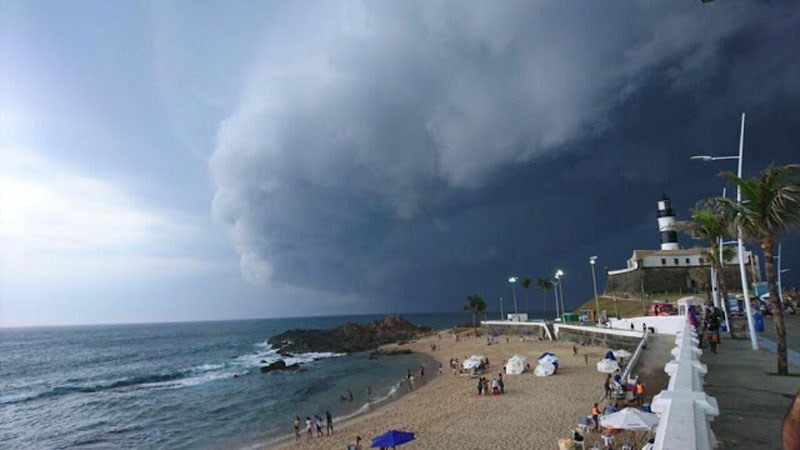RIO DE JANEIRO, BRAZIL – According to an alert from the Brazilian Navy, together with other meteorological institutes in the state, an extratropical cyclone is expected to form on Thursday, January 23th, off the coast of Santa Catarina.
The phenomenon was named subtropical storm “Kurumim”, an expression in Tupi-Guarani that means “boy”. However, the cyclone will bring strong winds to the Santa Catarina coast, around 60 km/h. The gusts could pass 80 km/h on the high seas.

Because of this, the authorities warn fishermen who use small and medium-sized boats. In addition, the orientation is to avoid fishing or any activity on the high seas during the formation and passage of the cyclone.
An extratropical cyclone (also called a mid-latitude cyclone) is a large low-pressure weather area with clouds, rain and heavy wind. They occur in areas that are between latitudes 30° – 60° from the equator. They are not the same as tropical cyclones or low-pressure weather areas from polar zones. They are actually many masses of cold and warm fronts producing rain, heavy wind, and sometimes tornadoes and even hail.
These cyclones are usually connected with fronts. A front is a system of changes in weather. It is caused by a very cold air mass meeting a very hot air mass. In the cyclone, there is a system of warm front and cold front.
The center of a cyclone is cloudier. There is also a very high chance of precipitation. The wind is strong and changes its direction, as the warm front passes. The weather is stable and fog is usual. As the cold front passes, there is a change of wind, the temperature decreases and rain is also common.

